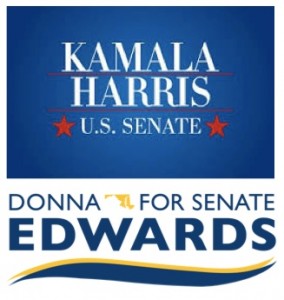The road to 2016 is shaping up to be an exciting journey. This week, Carly Fiorina officially joined Hillary Clinton on the campaign trail for president. As America ponders if we are “ready” for a woman president, the road to 2016 and beyond provides a unique opportunity to harness women’s political and economic power to elevate women’s voices in important debates and impact this election in a significant way, including supporting and electing more women.
Clinton and Fiorina’s candidacies represent the possibilities that exist for women’s leadership as they seek to crack the ultimate glass ceiling. What remains to be seen, though, is whether or not their historic races will help to create the momentum needed to elect more women in down ballot races across the country. At Higher Heights for America, we will be paying particularly close attention to how Black women will fare in capitalizing upon, or further contributing to, this momentum.

Although still early in the 2016 cycle, there are already several women running for open U.S. Senate seats, including two Black women who would be the first women of color elected to the Senate from their states: Maryland Rep. Donna Edwards and California Attorney General Kamala Harris.[1] Although the 114th Congress has the largest number of Black women serving ever in the U.S. House of Representatives, there are ZERO Black women in the U.S. Senate. Carol Moseley Braun made history in 1992 when she was elected the first and only Black woman to ever serve in the Senate until she left office in 1999.
That year, Braun was elected to the U.S. Senate with three other women, and 24 women were elected to the U.S. House. That Class of 1992 represents the largest one-cycle gain for women in Congress to date, a cycle acknowledged by most as the “year of the women.” Twenty-one years later, women hit another milestone on the road to reaching parity when a record 20 women served in the U.S. Senate.
Black women’s congressional representation tripled in 1992 (from 3 to 9 members). Moreover, the increase in Black women candidates and elected officials is a relatively recent phenomenon, with much of the gains occurring over the past four decades. In fact, the largest number of Black women ran for public office at the statewide and federal levels in 2014. In addition to the gains in Congress – where four new Black women representatives were elected, there are a total of 250 Black women state legislators in 2015, up from 242 at the end of 2014.

Although the recent gains are encouraging, Black women are still seriously underrepresented in American politics and even in the pipeline towards elected office. The number of women elected to statewide office – only two – did not expand this past November, and Black women are still only 4.1% of all members of the House in 2015 (up from 3.2% in 2014), despite being nearly 7% of the population. Still, the 2014 midterm elections provided a glimpse of Black women’s political imprint and their potential.
With the increase of women running for office, particularly Black women, 2016 is shaping up to be a record-breaking, history-making election cycle at all levels. One could even argue that the women running for U.S. Senate and other down ballot races across the country could provide the momentum to catapult a woman into the White House.
Glynda C. Carr and Kimberly Peeler-Allen are the Co-Founders of Higher Heights, a national organization focused on inspiring Black women to be change agents by harnessing their political power and leadership potential to increase the number of Black women in elected office.
[1] Edwards could also become the first woman of color elected statewide in Maryland.


 In April 2015, the
In April 2015, the 